A biking trip to the Nepali Himalayas, with a race thrown in for good measure? Sounds like an adventure not to be missed! We had three weeks to explore, starting with the Yakru Enduro race – dubbed the highest enduro race in the world – followed by bikepacking part of the Annapurna circuit. It was a trip to explore a new part of the world, experience a completely different culture and do something a bit out of the norm.
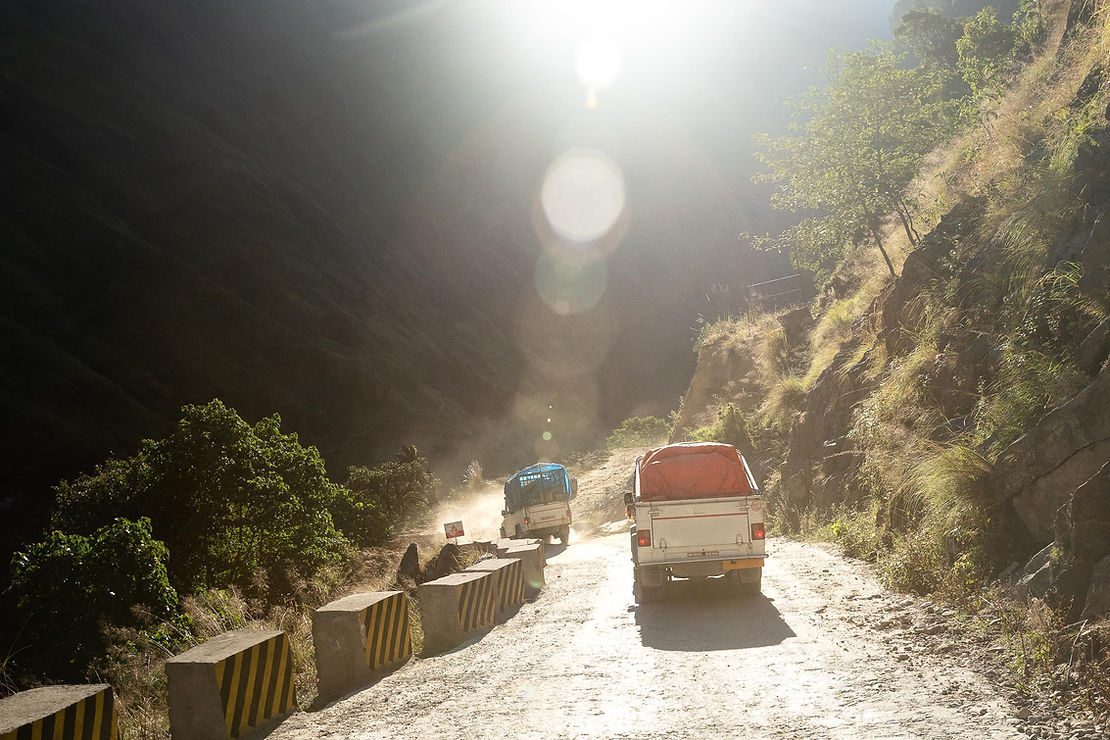
Four-Wheel-Driving Into the Adventure: The road into the Manang region of the Annapurnas was completed in 2011 by the Nepalese army; connecting Manang to the lower valley by 13+plus hours of 4wd action, instead of the traditional seven day hike. The road has encroached on the beauty and isolation of the Marsyandi Gorge so loved by tourists, but no one can deny the benefits motorised transport brings to these mountain communities. Photo: Dane Cronin
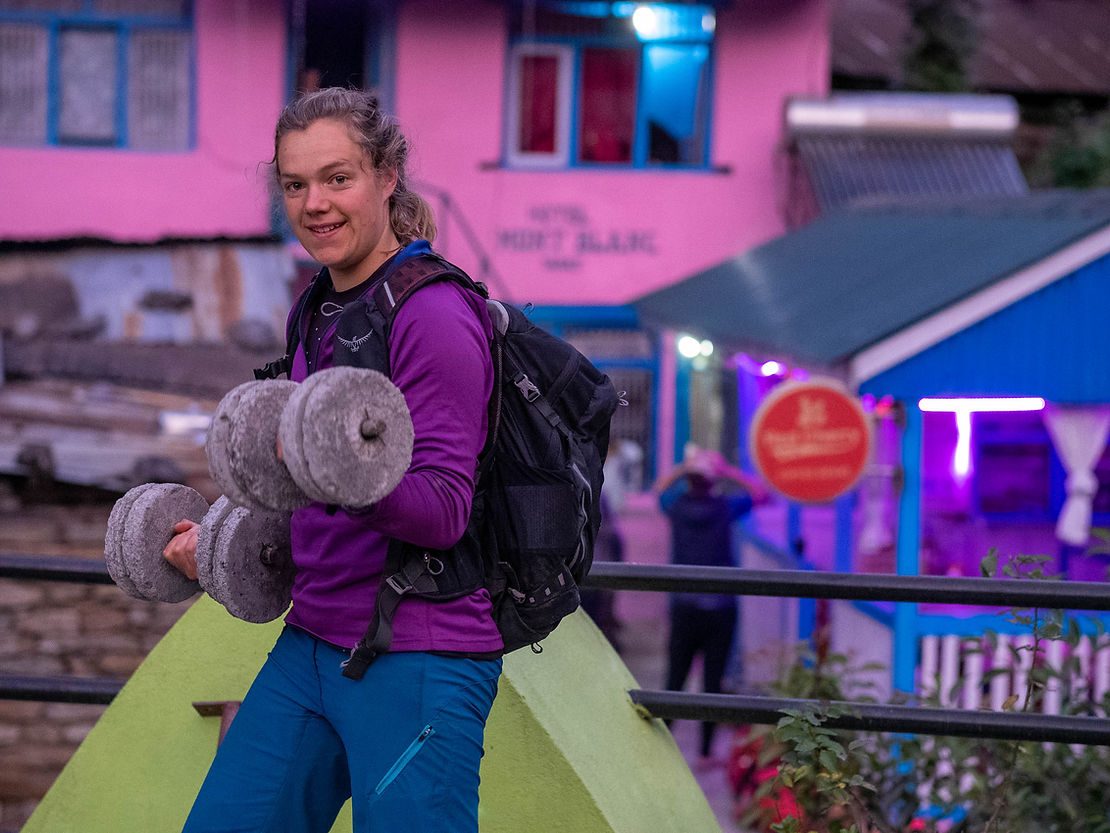
Learning the art of Nepali Time: we quickly established there was little point in expecting to be anywhere at a certain time. We went with the tide, and some of our best cultural immersion was done waiting for the truck to be fixed or a guide to arrive. Here, we tested out the gym set of our young Nepalese host, on the roof of his teahouse. Photo: Ben Gibson
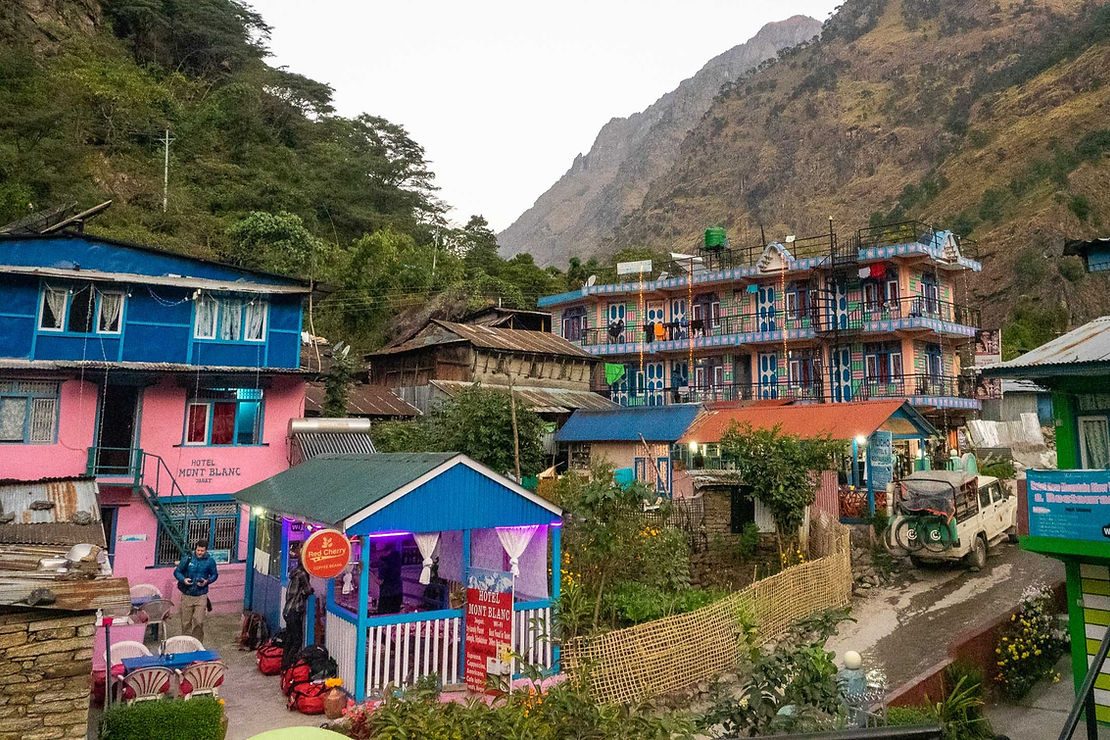
The typical view of a village in the Marsyandi Valley. Most buildings were multistorey, with unusual colour schemes and barely-straight beams. Roof tops often doubled as café terraces, giving 360 panoramic views of the surrounds. Picturesque and cosy, they were a welcome sight at the end of a day’s pedalling. Photo: Ben Gibson.
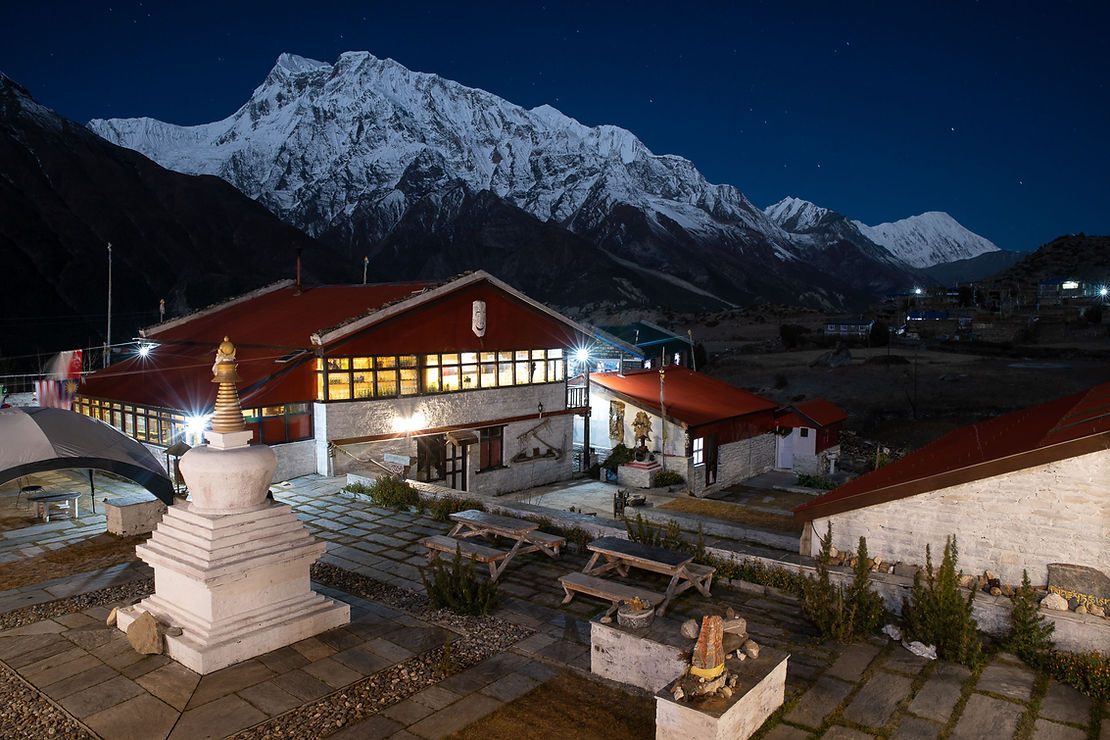
This lodge was home for the duration of the race – and was luxurious by Nepalese standards, with flush toilets and wild card hot showers. Behind the lodge is Annapurna III, towering another 4500m above us. By night, these peaks seemed even more enormous. It was pretty special to be able to relax, unwind and reflect in the evening below these beauties, with a cup of Masala tea or hot lemon in hand. Photo: Dane Cronin
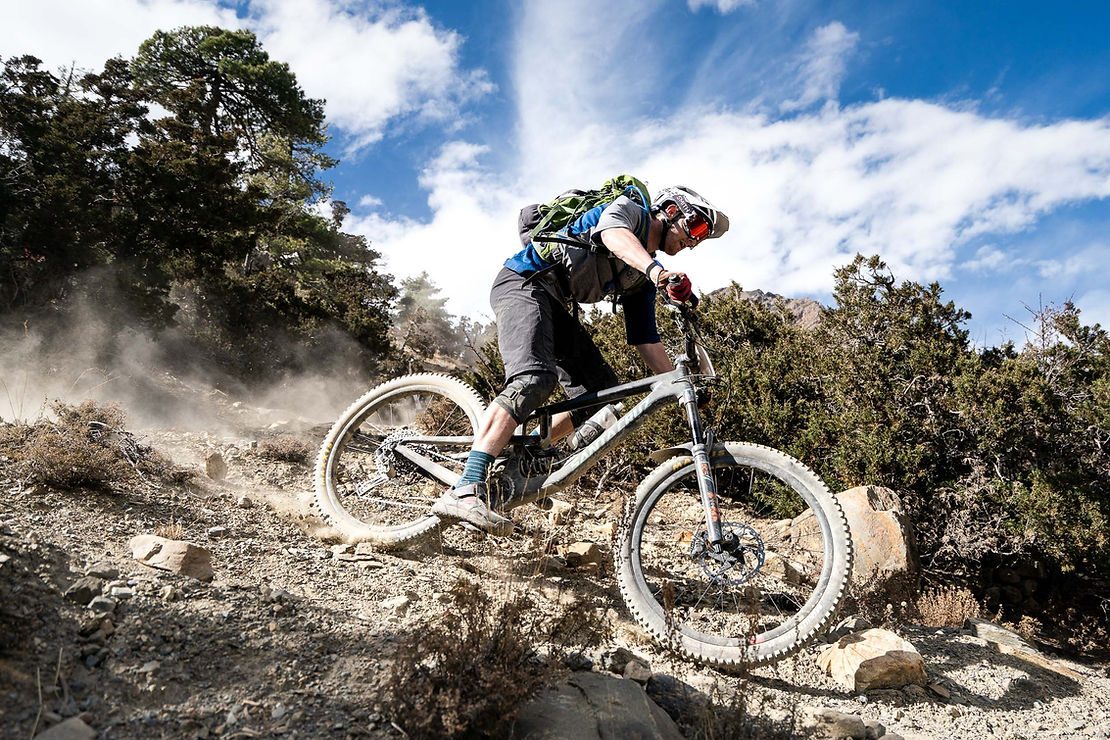
Into the Race Stages: Hiking trails and donkey tracks became nduro stages for the day, borrowing ancient paths of transport through the mountains and valleys. Racing blind in foreign terrain felt very non-racey and was always a balance between grip and speed, as we came to terms with moon-like dry dust. Photo: Dane Cronin
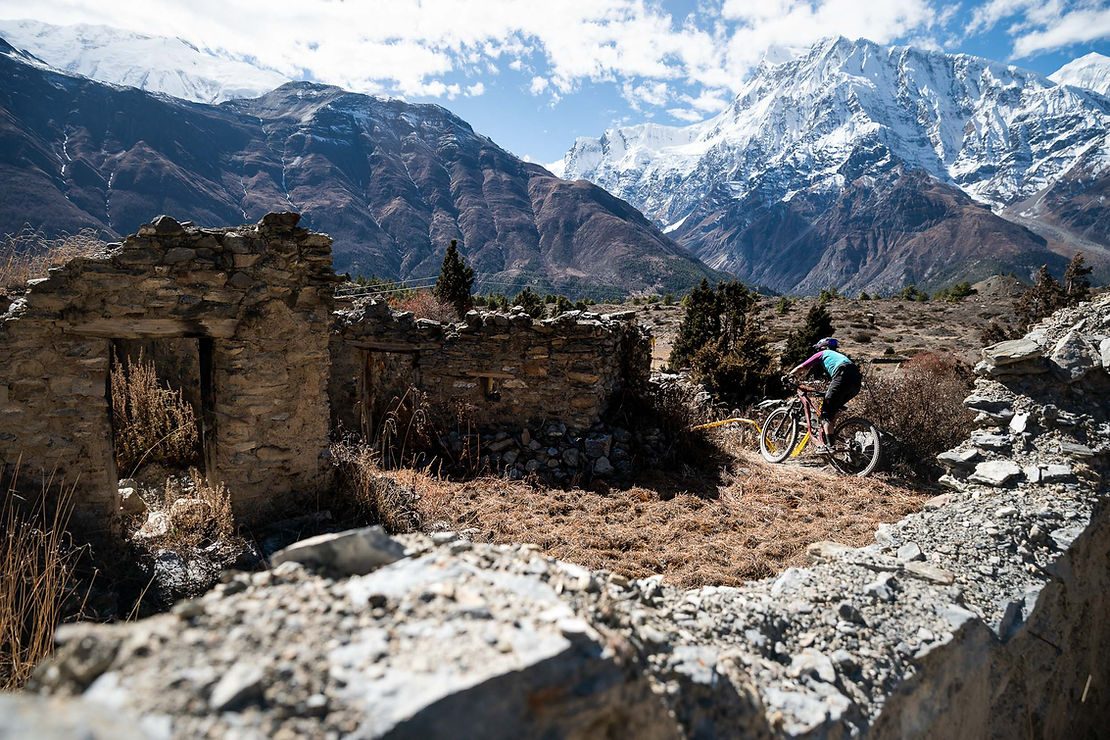
The race stages took us through a cultural slideshow, through ruins, shrines, villages and monasteries. Racing here was a stark contrast to the lives, culture and religion of the Nepalese. I felt very privileged to be able to have the choice to ride my mountain bike through these places and wonder about the thousands of years of change these ruins have seen. Photo: Dane Cronin
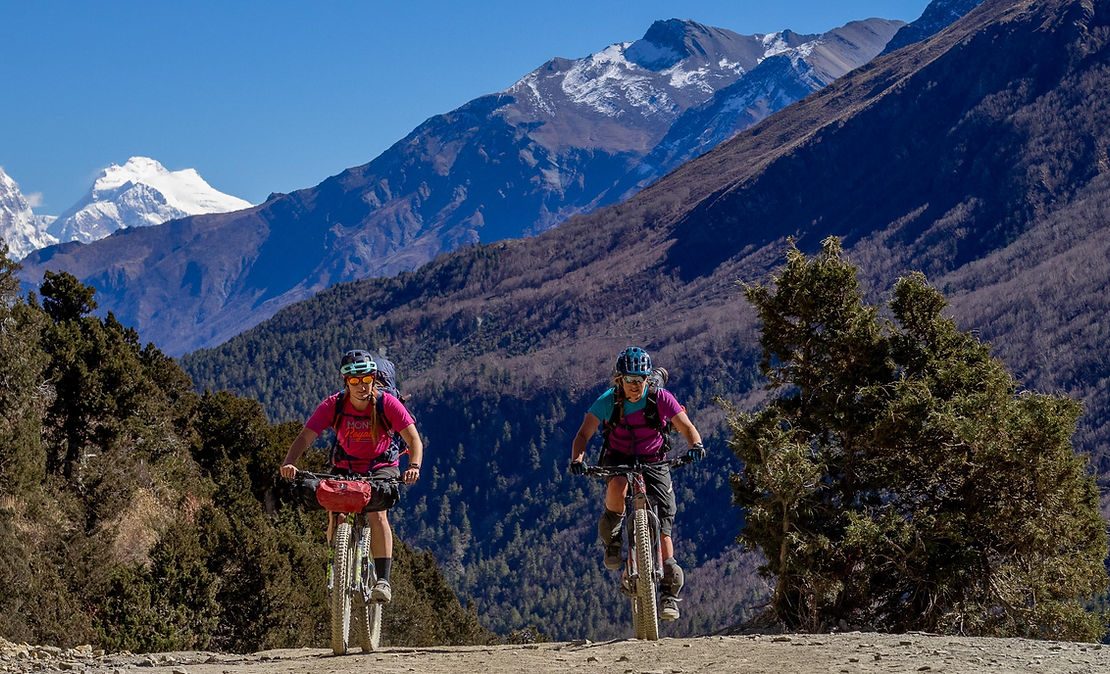
Swapping out timing chips for front rolls, we left our newfound friends from the Yakru race and pedalled up-valley to begin the second part of the trip. We were blessed with sunny days pedalling amongst mountains, and without a race team to support us; we felt much closer to people and the place. We all embraced the change in pace as we enjoyed and appreciated the scenery, with nowhere to be but in the moment. Photo: Ben Gibson
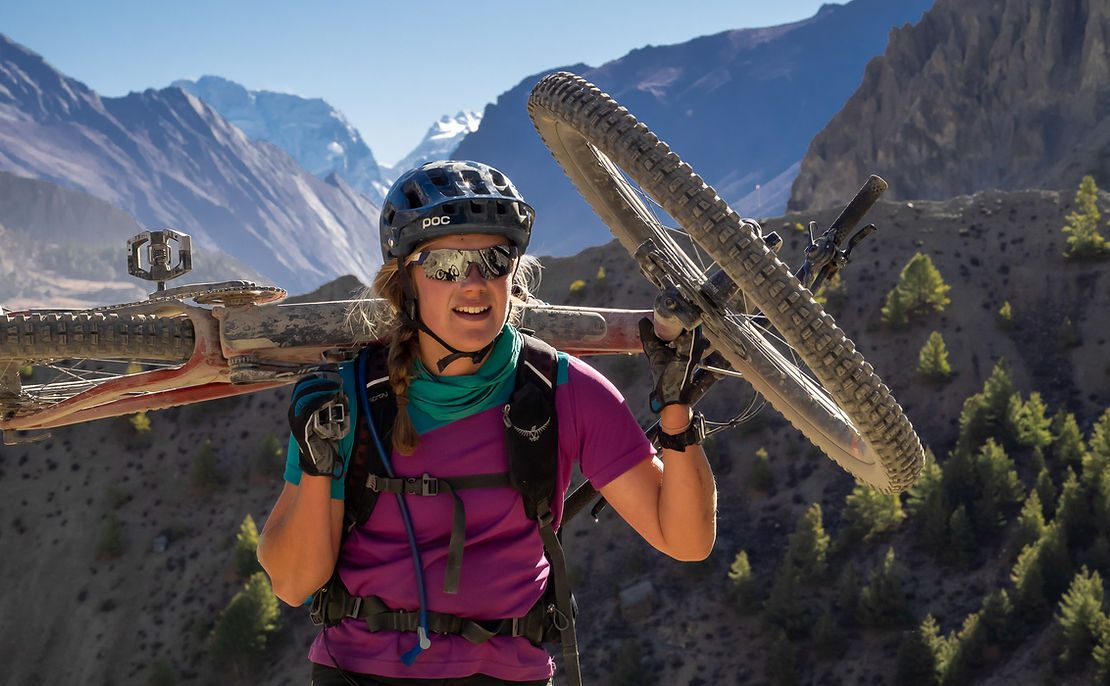
Off, up and Away: This is what most of our hill climbing looked like. None of us had done anything at altitude before and it was a whole new experience and pace working with what our lungs and heart could pull out of the oxygen-thin air. We didn’t mind too much, it was all part of the trip and gave us plenty of opportunity to take in the scenery and surrounds. Photo: Ben Gibson
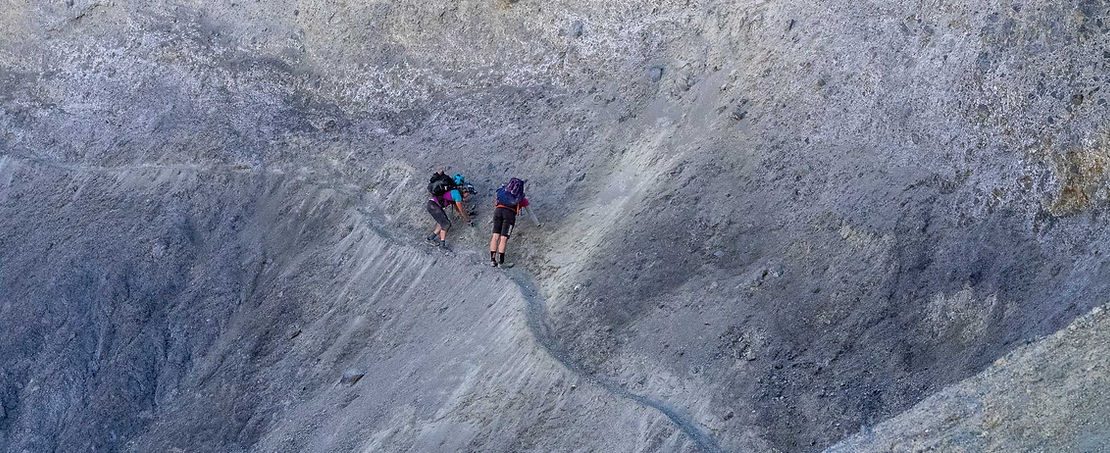
Risk vs Reward: We spotted a side trail on the map, offering an alternative route to the road to our lunch destination. It certainly was an alternative, coming across this landslip with a small path leading across it. Not wanting to turn back and lose the elevation we had already gained, there seemed little other option than to cross it – which was more challenging for some than others. The reward though? A morning of riding glorious single-track through the forest, without another soul in site. Photo: Ben Gibson
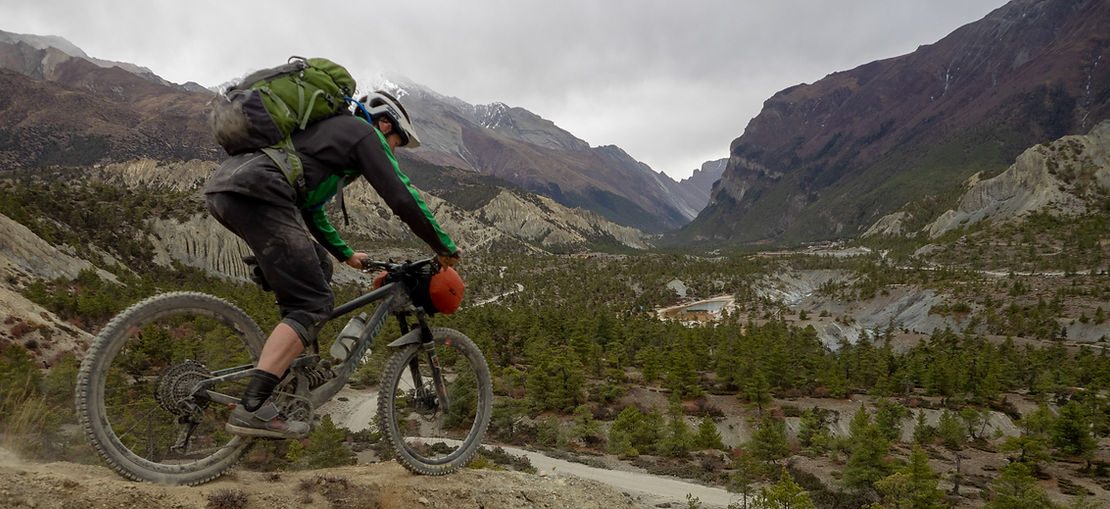
As hoped, we found some really sweet sections of single-track to ride. With the oxygen deprived climbing, the descents were all the more satisfying and had us savouring every turn, even with front rolls and loaded packs. Given more time, there would have been many more side trails and areas to explore with similar potential. Photo: Robin Pieper
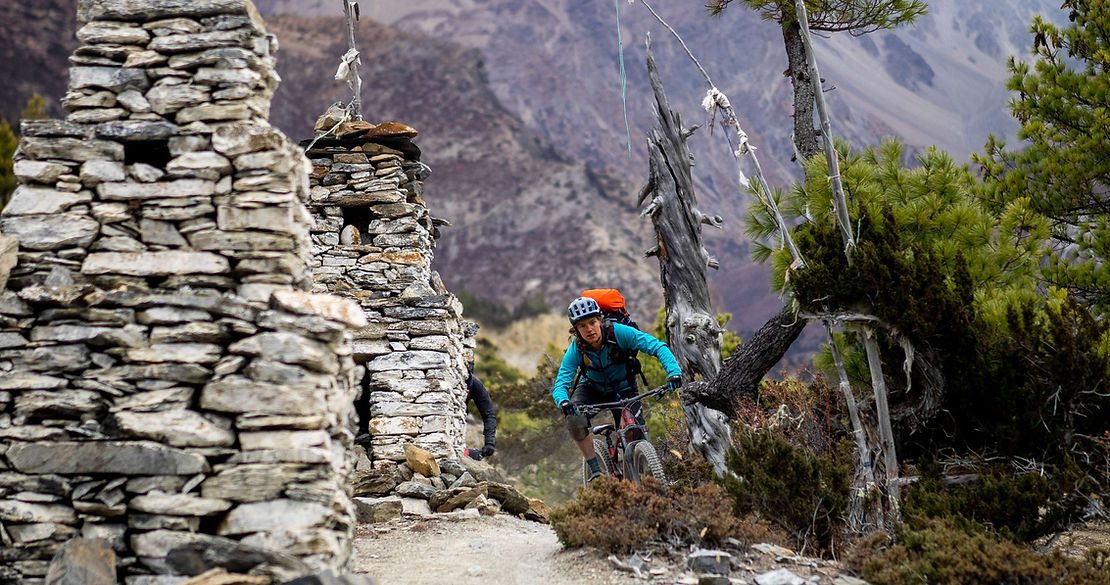
Dodging Shrines on the Trail: There are many of these Buddhist outposts on-trail around Nepal, and it is Buddhist practice to only pass these on the left, so that the shrine is on your right. Doing so gives good karma to the traveller, as passing on the right conversely gives bad karma. Touching the shrine is only allowed with your right ‘clean’ hand, for the same reasons. Photo: Ben Gibson
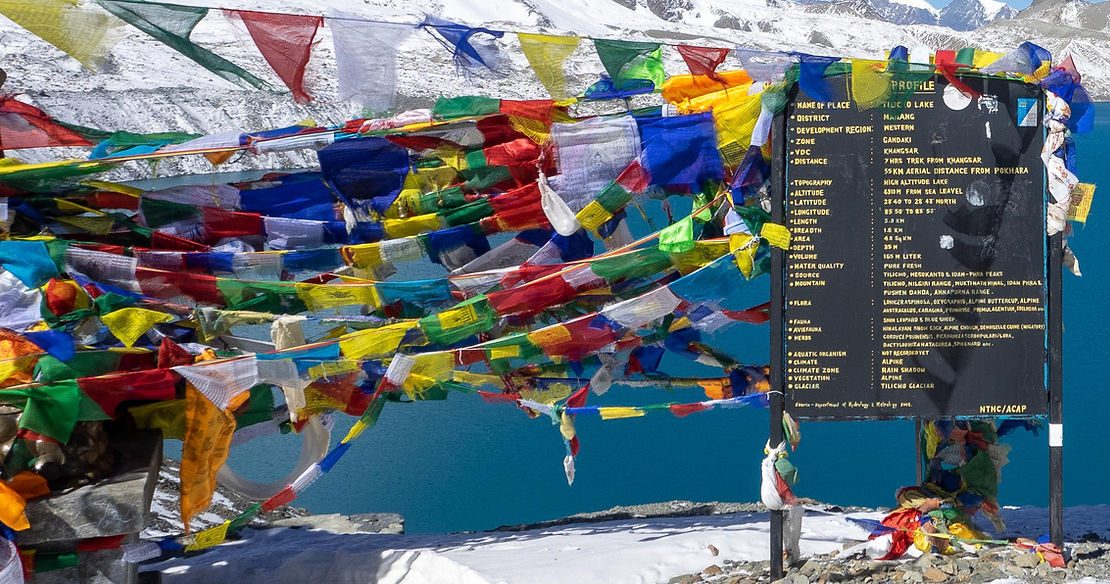
The high point of our trip, Tilicho Lake. Sitting at 5000m it’s claimed as the highest lake in the world (unconfirmed). Either way, it felt like a great achievement and stunning to look around and see snow, rock and ice literally as far as the eye can see. In New Zealand, there is almost always a view of lowlands, but not here. Earlier in the season, it’s possible to pass from here over to Jomson, but not with the lowering temperatures this late in the season. To get to Tilicho we needed an early start to avoid the wind, and even in the late morning a bone-chilling ‘breeze’ had already started. Photo: Ben Gibson

Descending from Tilicho lake, as the trail stretches out in front of us along the scree. We shared the trail with regular donkey trains, locals and tourists alike, and the trail was deceptively steep and slow going. Luckily bikes made the descents much quicker and more fun, although some of the exposure and technical corners were met by either cheers or concerns from other travellers. Photo: Ben Gibson
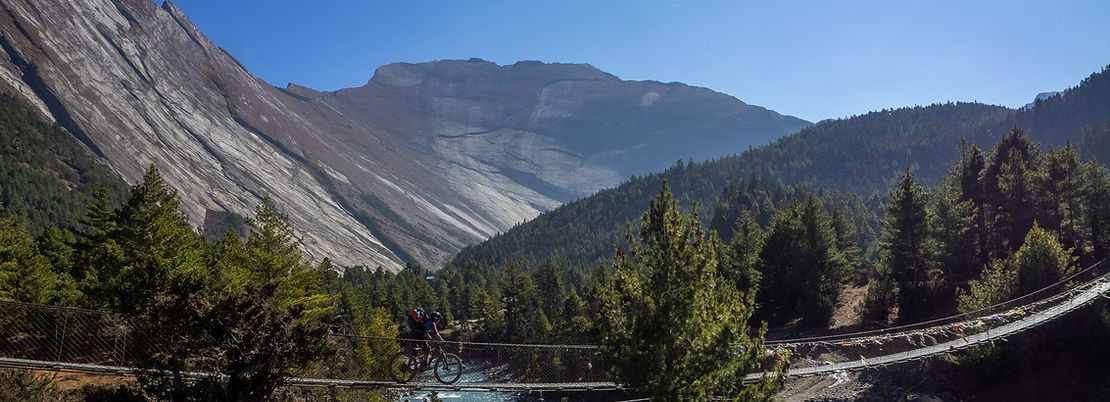
On the way Home: Crossing the Marsyandi River over one of the many single span swing bridges, connecting villages on the true left of the river by foot only to the ‘main road’. In the background, Heaven’s Door rises above us, a single slab of rock, rising 1500 vertical metres from the river. The geological masterpiece serves as a natural barrier (or ‘door’) between the temperate lower gorge of the Marsyandi River, and the montane plateau we are on now. Photo: Ben Gibson
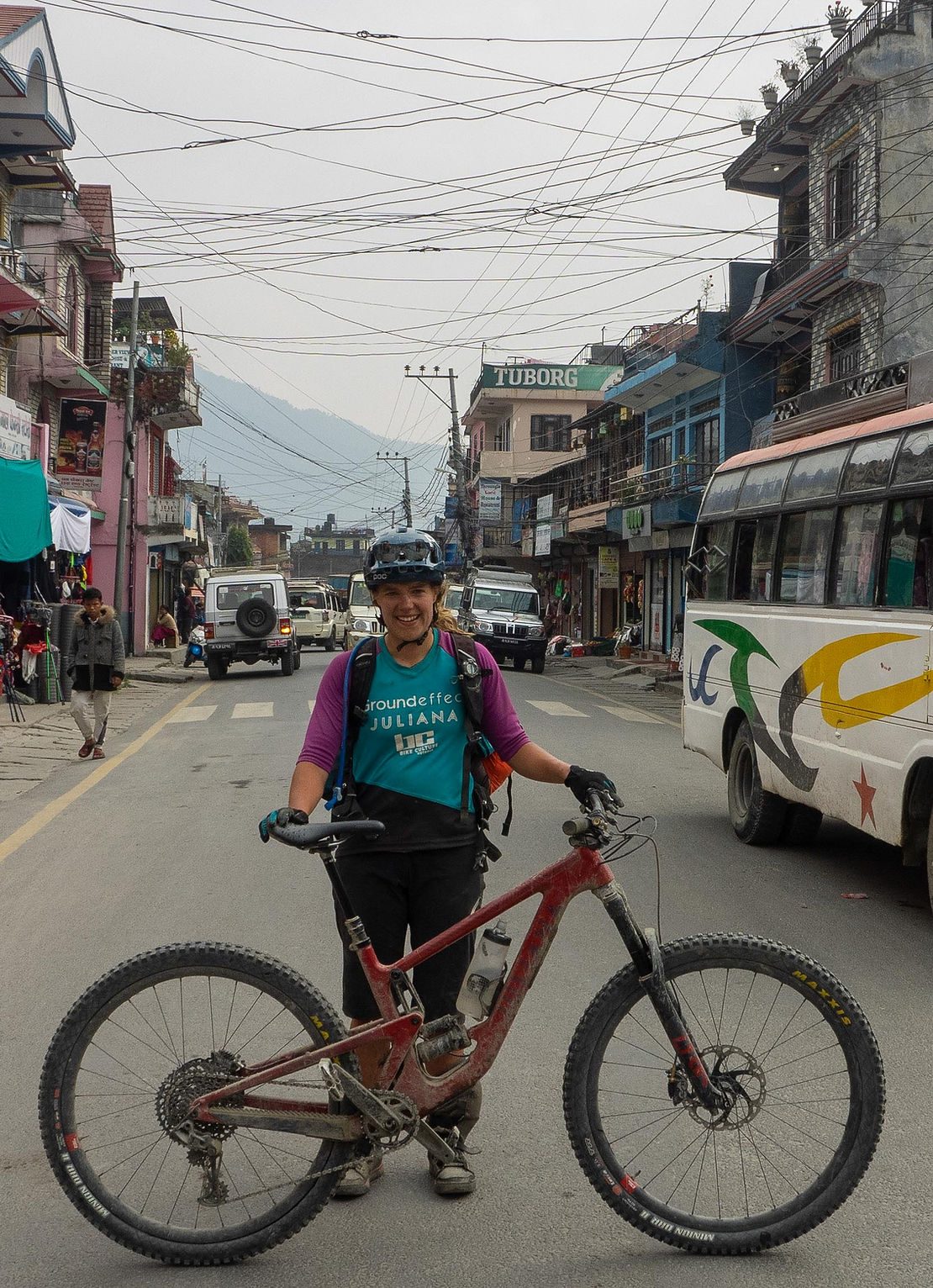
Bitter-sweet feeling arriving back in Besi Sahar, two weeks after we set out, with dusty bikes, empty legs and full hearts. After travelling through small villages among big mountains, it was a shock to the system to have busy streets and air thick with exhaust and oxygen. Photo: Ben Gibson

The last stop of our trip, visiting Boudhanath, a Buddhist Stupa. The largest Stupa in Nepal, it was a popular attraction for monks, worshippers and tourists alike. It really struck home the depth of religion in this country and the impact it has on shaping the culture and country. What an enriching experience to have cycled amongst the tallest peaks of the world and shared the culture and villages of the Nepalese. Photo: Ben Gibson
Words: Robin Pieper
Images: Dane Cronin, Ben Gibson & Robin Pieper

